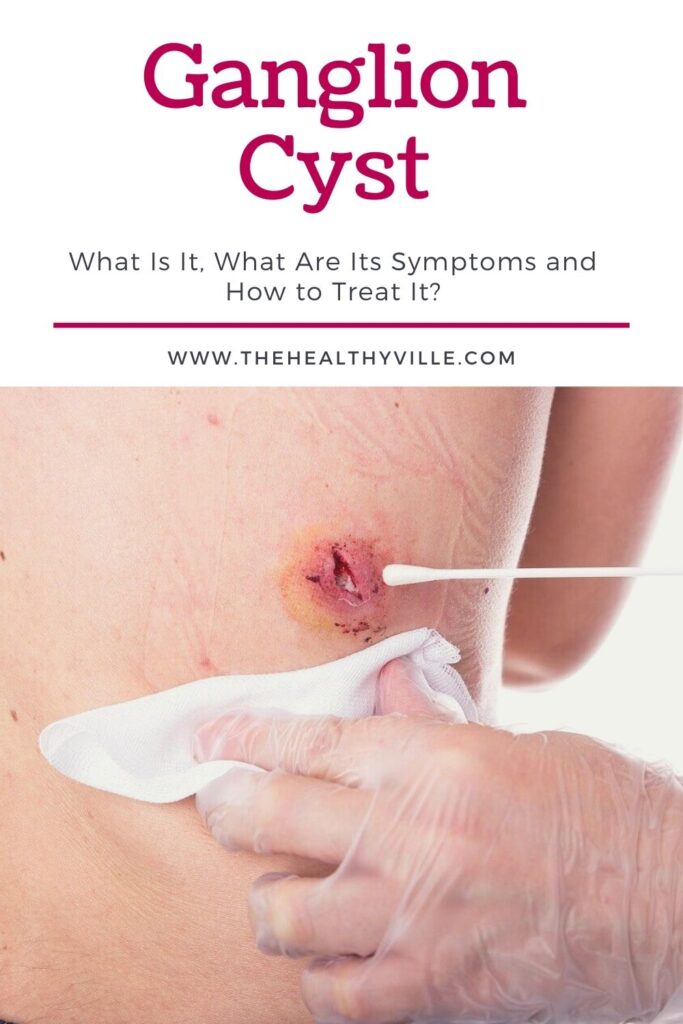Ganglion cyst can cause restlessness at first. However, there is nothing to worry about as it is a benign condition. Many times it goes away on its own.
A ganglion, also known as a “ganglion cyst,” is a lump that forms in a joint or tendon. The smallest are the size of a pea and the largest can measure about 2.5 centimeters.
A ganglion is usually round and oval. It is filled with a jelly-like fluid, the same fluid the body uses to reduce friction that occurs when moving joints and certain tendons.
Sometimes a ganglion can be painful if it is located near a nerve. If it is bothersome, it will need to be drained or removed. However, these types of cysts are benign; that is, they are not cancerous. Many times they disappear spontaneously.
Symptoms of a ganglion cyst
The ganglion is a bulge that appears in a joint or tendon and is filled with fluid.
In most cases, a ganglion forms a lump or nodule that is noticeable to the touch. It feels like a small lump that is under the skin. If it is very small, it will most likely go unnoticed.
The most common is that they appear on the wrist, on the back of the hand, the fingers or the instep. It may also occur on the knee, shoulder, back, or some other area of the body. Most commonly, they do not cause any symptoms.
If located near a nerve, a ganglion may cause any of the following symptoms:
- Tingling sensation in the area.
- Weakness or numbness.
- Pain.
- Loss of mobility.
Causes and risk factors
Science does not know the specific cause that causes the appearance of a ganglion. It is believed to occur when the tissue surrounding a tendon or joint is dislodged. A relationship has been found between these cysts and the continued use of the joints and tendons.
Also, there are ganglions that come out after having suffered a blow. They are more common among gymnasts, as they make repeated efforts on the wrist. Cysts that develop in the extreme joint of a finger are often related to arthritis.
Risk factors for developing a ganglion are as follows:
- Age and sex. They are more common in women between the ages of 20 and 40.
- Previous injuries. Past injuries to the joints or tendons make a person more likely to develop a ganglion.
- Osteoarthritis. Wear and tear arthritis in the extreme joints of the fingers carries a higher risk of developing ganglia.
Diagnostic tests
The diagnosis of a ganglion is straightforward. Typically, only a physical examination and a basic interview are required to determine its presence, while most of the time it can be seen with the naked eye.
The doctor may press on the lump to see if it causes pain or not. Sometimes he illuminates the area with a beam of light in order to see if the cyst is solid or filled with fluid.
If there is any doubt or a precise diagnosis is required, tests such as X-rays, ultrasounds, or MRIs are sometimes ordered. These help detect hidden cysts and also help rule out other possible conditions.
Many times the diagnosis is confirmed by a procedure called aspiration. It consists of extracting the fluid from the cyst using a syringe with a needle. The content of a ganglion is a thick and transparent substance.
Available treatments
In many cases, the ganglion goes away on its own over time.
The most common is that when a ganglion is detected, a waiting compass opens. Sometimes, as the American College of Foot and Ankle Surgeons explains, it goes away on its own, without any treatment. Therefore, a reasonable time will be given to generate the possibility of spontaneous referral.
Also, immobilization of the compromised joint is likely to be recommended. Continuous movement causes the cyst to increase in size, so it is advisable to keep the area still.
If there is discomfort, or the cyst does not remit, it is common to go to more complex procedures such as the following:
- Aspiration. It is a puncture that is done with a needle to drain the fluid from the cyst. This procedure does not remove the root of a ganglion, so it is likely to reappear.
- Surgical treatment. The procedure is called excision, and it involves removing the cyst and part of the joint capsule or tendon sheath. These are considered the root of a ganglion. It is an outpatient surgery.
In the past, a home remedy was used to treat a ganglion. It consisted of hitting him with a heavy object. Other people poked him with a needle to “pop” him. Neither method is effective and instead they can be dangerous.
Upon suspicion, have a medical visit
A ganglion is not a serious health problem and there is nothing to be alarmed about. However, it is very important that the doctor makes the diagnosis. Whenever a lump appears, it is necessary to consult a doctor.
Neither treatment guarantees that the ganglion cyst will not return. Although surgery is usually very effective in these cases, it is also possible for a ganglion to re-form in the same area or in another part of the body.
Don’t forget to SHARE about ganglion cyst with your friends and family on your social networks!

